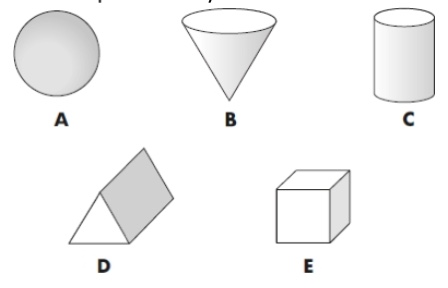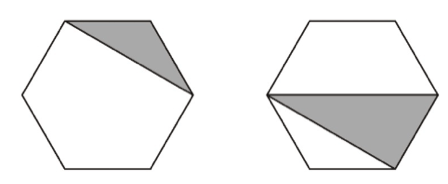2D And 3D Shapes And Their Properties: Explained For Primary School Teachers, Parents And Kids
Here we provide a summary of the 2D shapes and 3D shapes covered in the maths curriculum at primary school with a specific focus on the properties of shapes that teachers and parents can support children to learn and understand.
For a more in-depth look at shapes, then the following articles are recommended:
- What Are 2D Shapes And Which 2D Shapes Do Kids Learn At Primary School?
- What Are 3D Shapes And Which 3D Shapes Do Kids Learn At Primary School?
- Regular And Irregular Shapes
What are the properties of 2D shapes?
2D shapes have two dimensions, such as width and height. We will go into more detail classifying these below.
FREE 2D Shapes Worksheet Year 3
Download this FREE recognising 2D shapes Geometry worksheet to help your Year 3 pupils consolidate their understanding of properties of 2D shapes.
Download Free Now!What are the properties of 3D shapes?
3D shapes have three dimensions, such as width, height and depth. We will go into more detail classifying these below.
When will children learn about the properties of 2D and 3D shapes?
Here’s what the National Curriculum expects to be taught about the properties of shapes, separated by key stage:
KS1 children should be able to:
- Develop their ability to recognise, describe, draw, compare and sort different shapes and use the related vocabulary.
Lower KS2 children should be able to:
- Draw with increasing accuracy and develop mathematical reasoning so they can analyse shapes and their properties, and confidently describe the relationships between them.
Upper KS2 children should be able to:
- Classify shapes with increasingly complex geometric properties and learn the vocabulary they need to describe them.

Read more about sorting shapes: What Is A Carroll Diagram?
Below are some of the shapes children will need to know, including their properties, such as the number of sides.

Unlimited primary maths tutoring with Skye, the voice-based AI maths tutor.
Built on the same principles, pedagogy and curriculum as our traditional tutoring but with more flexibility, reach and lower cost.
Join the schools already helping hundreds of primary pupils nationwide with Skye’s one to one maths tutoring
Watch Skye in actionProperties of 2D shapes
Circles
- A semi-circle has 2 sides; 1 curved side and 1 straight side. The full arc is a 180° angle.
Triangles (3-sided shapes)
- An equilateral triangle is a regular triangle and each angle equals 60°.
- A right-angled triangle is any triangle with one right angle.
- A scalene triangle is an irregular triangle. All sides and angles are different.
- An isosceles triangle has two sides and two angles that are the same.
Quadrilaterals (4-sided shapes)
- A square is a regular quadrilateral and each angle equals 90°.
- A kite has two pairs of equal-length sides and the diagonals cross at right-angles.
- A rectangle has two pairs of parallel straight lines and each angle equals 90°.
- A rhombus has two pairs of parallel lines, as well as equal sides and opposite equal angles.
- A trapezium has one pair of parallel lines.
- A parallelogram has two pairs of parallel lines and opposite equal angles.
Polygons
- A pentagon is any shape with 5 sides. The interior angles add up to 540°.
- A hexagon is any shape with 6 sides. The interior angles add up to 720°.
- A heptagon or septagon is any shape with 7 sides. The interior angles add up to 900°.
- An octagon is any shape with 8 sides. The interior angles add up to 1080°.
- A nonagon is any shape with 9 sides. The interior angles add up to 1260°.
- A decagon is any shape with 10 sides. The interior angles add up to 1440°.

Properties of 3D shapes
- A sphere has 1 curved surface.
- A hemisphere has 1 face, 1 curved surface and 1 edge.
- A cone has 1 face, 1 curved surface, 1 edge and 1 vertex.
- A tetrahedron, or triangular-based pyramid, has 4 faces, 6 edges and 4 vertices.
- A square-based pyramid has 5 faces, 8 edges and 5 vertices.
- A cylinder has 2 faces, 1 curved surface and 2 edges.
Prisms
- A triangular prism has 5 faces, 9 edges and 6 vertices.
- A cube has 6 faces, 12 edges and 8 vertices.
- A cuboid has 6 faces, 12 edges and 8 vertices.
- A pentagonal prism has 7 faces, 15 edges and 10 vertices.
- A hexagonal prism has 8 faces, 18 edges and 12 vertices.

Properties of shapes questions
Put your children’s problem solving to the test!
1. Which of these shapes is a pentagon?

(Answer: Bottom left)
2. Which shape has exactly 5 faces?

(Answer: D)
3. These two shaded triangles are each inside a regular hexagon. In each hexagon, is the triangle an equilateral, isosceles or scalene?

(Answer: 1st = isosceles / 2nd = scalene)
4. Here is a drawing of a 3D shape.

Complete the table.

(Answer: Faces = 6 / Vertices = 8 / Edges = 12)
5. Is this rhombus a regular quadrilateral? Explain how you know.

(Answer: No – not all angles are the same)
Properties of shapes worksheets
Use these related worksheets for an interactive approach to shapes in the classroom, including real life examples and everyday objects!
- Year 2 Independent Recap – Properties of 2D Shapes Worksheet
- Year 2 Independent Recap – Properties of 3D Shapes Worksheet
- Year 5 Ready-to-go Lesson Slides – Properties of Shape Worksheet
Wondering about how to explain other key maths vocabulary to your children? Check out our Primary Maths Dictionary For Kids. You can also check out our similar blogs:
DO YOU HAVE STUDENTS WHO NEED MORE SUPPORT IN MATHS?
Skye – our AI maths tutor built by teachers – gives students personalised one-to-one lessons that address learning gaps and build confidence.
Since 2013 we’ve taught over 2 million hours of maths lessons to more than 170,000 students to help them become fluent, able mathematicians.
Explore our AI maths tutoring or find out about a primary school maths tutor for your school.







